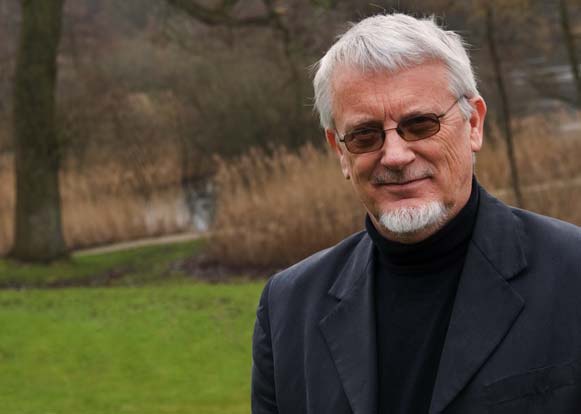
|

A Sound Educational Environment and the Inclusive SchoolCreating a sound educational environment, embracing all students constitutes thus the first steps towards a democratic school.A sound educational environment and an inclusive school are essential in relation to creating democracy in the school, and an important precondition for teaching students how to interact in a democratic way. An inclusive school ensures that the specific student receives an education that matches his or hers qualifications. Thus the education shall be established so that it matches all students. Furthermore the inclusive school sees diversity and multiplicity as a resource, and focuses on dialogue and communication in order to create contentment, confidence and security among the students. This will provide students with the best possibilities for academic learning and personal development. If a school fails to establish contentment, a decent way of communicating, room for everybody, mutual respect, and individual freedom of speech, the students will be deprived of experiencing an educational environment based on democratic values. A school life where the students – within the educational framework of the school – have influence and joint responsibility. Inclusive all students and creating a sound educational environment constitute thus the first steps towards a school based on democracy. Creating and maintaining a sound educational environment should have first priority for schools and educational institutions in relation to the democratic process. In connection with the Educational Environment Act, the schools are now obliged to examine and develop the educational environment. In addition, students now have the right to participate equally in the process with the school management and the safety steward. Inclusiveness is especially important on schools with many bilingual students. The educational institution and the daily teaching must reflect the ethnical and social differences among the students. Furthermore it is important that students learn and accept that people are different with various opinions, habits, cultures and religions. The ambition of creating an inclusive school based on contentment and dialogue requires a huge effort by the school management. In the process of designing the fundamental values, and developing and organising the daily school life, the management must contemplate how the concepts are implemented in practice. However, succeeding in creating an inclusive school constitutes as mentioned a huge step in relation to ambition of a school based on democracy.
Interview
A sound Educational Environment and Democracy Go TogetherIn relation to creating a sound educational environment, the school management and the teachers shall look upon the students as equal associates. If this is accomplished, it is a wonderful example of democracy in practice, says Ole Juhl, leader of the Danish Centre of Educational Environment. Ole Juhl has no doubts. A sound educational environment and democracy go together. According to Ole Juhl, a school based on democratic processes will ensure that students have influence on the educational environment, and show that they are respected as equal associates. Unfortunately, many schools fail to involve the students in the statutory procedures regarding the educational environment, contrasting sharply with the objectives of the school of preparing the students for active participation, joint responsibility, and rights and duties in a society based on freedom and democracy. “If we fail to involve students in the democratic processes, and the development of the school, we also fail to rear future citizens who are eager to participate in the democracy. The students shall be active players and equal associates. We need to respect their views and convictions – even though they contradict the general routines of the school,” says Ole Juhl. Democracy in PracticeFurthermore he emphasises that the process of developing the educational environment is a unique opportunity to show the students how democracy works in practice: “In Social Science and other subjects the students learn how the democracy functions in theory. But when the students get involved in the procedures of developing the educational environment, they learn that they are able to create improvements through democratic procedures, that their opinion and knowledge count, and that you often have to enter into a compromise.” Students Yearn for DemocracyAccording to Ole Juhl, is not only a question of principles and teaching of democratic processes. It is also important to involve the students regarding the development of the educational environment simply because they are the real experts. They are the ones who use the student toilets, experience mobbing, and are the ones most qualified to evaluate the teachers’ education: “Thus in order to create a sound educational environment to the satisfaction of the students, it is essential that the students are heard.” According to Ole Juhl, the requests of the students often concern the psychical environment. They want a school without mobbing, security, solidarity, joint responsibility, order in the class, mutual respect, room for everybody and decent ways of communicating: “Actually, the students wish to enhance focus on the values that the society and the school system also regard as fundamental for a democracy. Thus if we listened more to them, the students would in fact ask for help to become more democratic and improve democracy in their school,” says Ole Juhl.
Interview
It is Not a Question of Them and UsEthnicity is not an issue, actually a provocative matter to bring up. This attitude pervades the daily school life at the Upper Secondary School, Mulernes Legatskole, located in the middle of Vollsmose in Odense. “When you enlist at our Upper Secondary School, you are immediately told that it is about us and not them and us. We have huge focus on sense of community and democracy,” says rector Niels Jørgen Helms. At the Upper Secondary School, 20 percent of the students are bilingual – or bicultural as it is called on Mulernes Legatskole. Even though it is a provocative matter to bring up among the students and in general on the school, Niels Jørgen Helms acknowledges that the school management makes a huge effort to ensure that the bicultural students are doing well. “We have e.g. bilingual role models, and make a special effort to ensure that they are represented in e.g. the school council and the collaborative programme with the Primary and Lower Secondary School.” In order to assist especially parents of the bilingual students, the Upper Secondary School has numerous rules and guidelines. “Due to insufficient information material about e.g. Upper Secondary Education, many rumours and myths about the Danish youth culture flourish among the parents of the bilingual students. Many believe that it is all about partying and drinking. To ensure that parents and their children will not dissociate themselves from the school or parts of the education, we have introduced numerous rules, which we have made clear to everybody. On the other hand, I think that the state – hereunder the Ministry of Education – should see to that proper information translated into various languages would be available,” says Niels Jørgen Helms. The school has e.g. implemented a set of general school rules which hangs in all classrooms. The first section goes: “No students shall be exposed to insulting or degrading treatment.” The school has also introduced more specific rules regarding e.g. participation in gymnastics and alcohol. “We are very strict in relation to intervene and see to that the rules are complied with. In order to create a school based on a sound community and decent ways of communicating, we need to be consequent when our rules and fundamental values are violated.”
|
||||||
|
To the top of the page |

